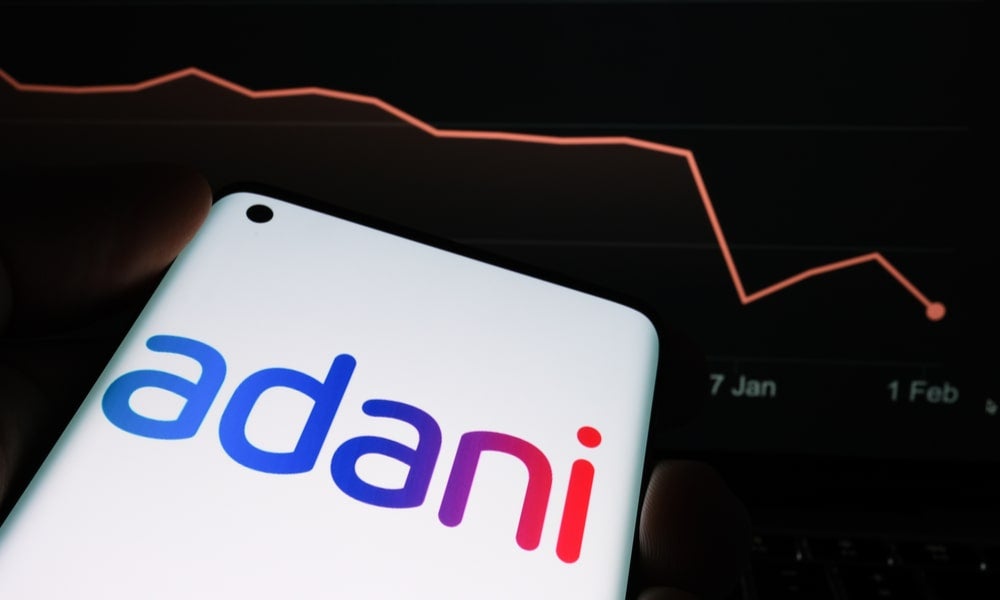Short selling Adani: how Hindenburg Research triggered the price plunge
There are legal and ethical questions that need to be asked about Hindenburg Research's report into Adani Group, writes UNSW Business School's Mark Humphery-Jenner
Adani was one of the world's most valuable firms. But its stock price has fallen nearly 50 per cent, crashing to earth like a blimp engulfed in flames. Gautam Adani, the founder and CEO, has seen his wealth crater. He has fallen out of the top 10 wealthiest people in the world and is no longer Asia's richest man.
And the catalyst for this? An explosive report by Hindenburg Research that alleges Adani’s stock price was buttressed by large-scale stock price manipulation and fraud. Hindenburg even raises questions about the accounting practices at Adani’s Australian operations, which include the Carmichael Rail.
Adani hit back, claiming that the report was a “calculated attack on India” and the “growth story and ambition of India”. Hindenburg has argued that Adani’s jingoistic response did not address the majority of their core allegations and in fact, supported some of them. Adani’s response also contains irrelevant information (on ESG for example) possibly consistent with a “bury them in paper” style of defense.
But beneath the surface is a financial incentive. Hindenburg’s financial model involves identifying “bad” firms, investing to profit from the company’s price collapsing, and then publishing a negative report about the company. Hindenburg’s actions have been controversial. It looks as if Hindenburg is profiting from ‘causing’ a company’s demise. So how then does Hindenburg exactly make money, is this legal, and is it ethical?

How does Hindenburg make money and how does short selling work?
Hindenburg – and other short sellers – might expose fraud. But, they do so to make money. This typically involves having a “short exposure” to the company’s stock, which benefits when the stock price falls. This is akin to “lay betting” (i.e., betting against a team in a match).
Hindenburg (and other such investors) do this in several common ways.
- Selling borrowed stock: Short selling involves ‘borrowing stock’ from an owner and selling the stock in the market. To end their trade, the short seller will then buy the stock in the market and give that stock to the original buyer to ‘repay’ the loan. The profit or loss is then the extent to which the stock price changes during the trade.
- Synthetic short positions: There are also synthetic short positions that involve ‘derivatives’, so-called because their payoff derives from the price of the underlying security. Contracts for Difference (CFDs) or Futures are two such examples. These are like shorting on steroids because they allow the investor to have a leverage position (i.e., where they borrow many times the amount that they have deposited in their account)
- Put options: Put options give the holder the right, but not the obligation, to sell the underlying asset (here, Adani’s shares) at a pre-determined price at (or up until) a pre-determined date. Options can become expensive as holders must pay a ‘premium’ (i.e., a unit price) to buy an option.
- Bonds: Shorters can further invest in (or short) bonds. This can involve credit default swaps (CDS), which are essentially insurance against a bond default. If Adani were in a dire financial position, owning rights to a payout on default has a similar thesis to shorting the stock.
The above are some of the most common strategies. Investors can combine financial instruments to create more complex strategies.
Read more: Why the collapse of crypto exchange FTX is worse than Enron
Are Hindenburg Research's actions legal?
Hindenburg’s practices raise some questions with investors and regulators. Two main legal issues arise:
Market manipulation: One concern is that an ‘activist investor’ might take a short position, publish a malicious report, and then cash out after spreading false information. However, regulators have already thought of this and it is illegal. It is easy to discover as it will be readily apparent if the report is in fact false and misleading.
Insider trading: A related concern is insider trading. An activist investor might obtain material non-public information, trade on that information, and then reveal the information after they have traded. In Australia, it is illegal to trade on information that is ‘not generally available’. For example, if you know the RBA’s rate decision before the market does, it is illegal to trade on it. The US regulations are generally similar.
Hindenburg is skating on thin ice with some of their assertions. For example, they state in relation to Carmichael Rail transactions: “None of the transactions were specifically disclosed in the Adani Enterprises annual reports. We uncovered them only by reviewing financials for the private Singaporean Carmichael Rail entity.”
If those financials were available in a database or online, Hindenburg is in the clear. However, if Hindenburg only obtained the financials that are ‘not generally available’, Hindenburg must be careful. Notably, however, Hindenburg levels so many allegations that do use public information that establishing they traded on one relatively minor piece of non-public information could be challenging.
Note that such insider trading concerns would not apply if the putative investor releases the information to the market and then trades as the information would now be public.

Is this ethical? Should we be concerned?
There are some concerns about whether it is ethical to profit from a company’s demise. Ethics can be arbitrary. However, we can consider some guidelines. These include:
- Does society benefit from information about fraud coming to light?
- If there were no financial incentive, would a company really spend two years doing detailed forensic analysis?
- Does anyone unfairly lose from such a report such that there is a policy reason to discourage such profits?
Discovering Enron-scale frauds is a public good. Further, Hindenburg – and its employees – need to eat. And thus, there must be some financial payoff to do this work. These reports would not exist without the payoff and the talent would work elsewhere.
Subscribe to BusinessThink for the latest research, analysis and insights from UNSW Business School
Existing shareholders might lose from Adani’s stock price declining. However, the decline is properly thought of as being caused by fraud rather than the report. The report merely identifies that fraud and informs investors about it. If the report is truthful, and Hindenburg is merely informing the market, blaming Hindenburg for the crash is like blaming the alarm for the fire.
Ultimately then companies such as Hindenburg are generally a net positive if they comply with all relevant laws, securities regulations, and privacy guidelines. This is regardless of whether the investor profits in so doing.
Mark Humphery-Jenner is an Associate Professor in the School of Banking & Finance at UNSW Business School. He has been published in leading management journals, and his research interests include corporate finance, venture capital and law. For more information, please contact A/Prof. Humphery-Jenner directly. A version of this post first appeared on The Conversation.
